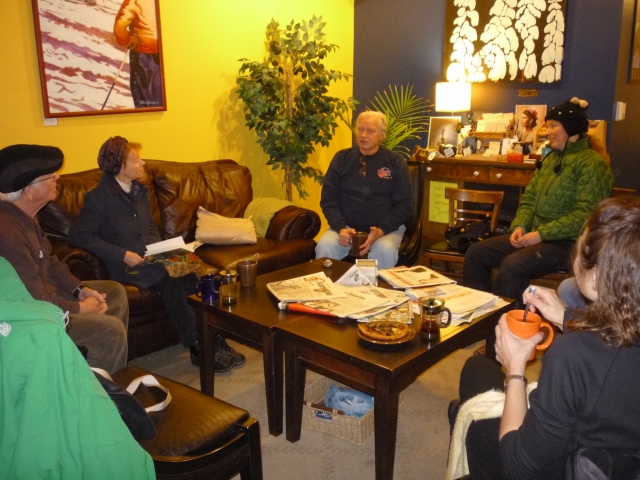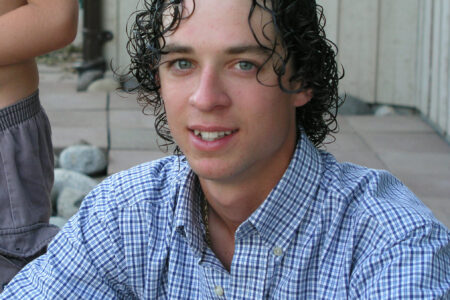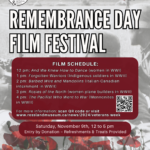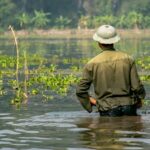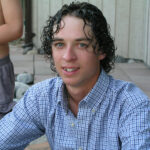Survivor Saskatchewan: Lessons in sustainability learned in the sticks of the boonies
This past Saturday afternoon, the Rossland Real Foodies launched a three-part conversation series highlighting locals who have made sustainable living a part of their lifestyle so that they can share their experiences and knowledge with community members interested in food sustainability.
“The idea was to have a seasoned person acting as a catalyst for discussion,” Hanne Smith, the series organizer, said during her introduction to the inaugural session on Saturday, which saw about 12 attendees.
This first conversation featured Les Anderson, who retired here in the Mountain Kingdom in 1999 with his wife, Violet, who is a Rossland native. Mr. Anderson himself however, is a native of northern Saskatchewan – way northern Saskatchewan, up near Lake Athabasca. His father was a game warden, which at the time was as federal job that paid pittance and required living off the land out in the sticks. Mr. Anderson grew up in an incredibly isolated area around what would eventually become Uranium City. The only way in and out was by plane, which came twice a year with the bare basics – a barrel of salt pork, flour, sugar, and some other items – but other than that the Anderson family’s survival depended upon their own ability to grow, harvest, and preserve the food that grew in their environment.
Which makes him an excellent source of information because the skills his family used to survive in the bush are highly relevant to those wishing to bring some sustainability into their lives now.
Mr. Anderson came from a family tradition of living off the land. His great great grandparents were homesteaders in the middle of nowhere Saskatchewan, where the nearest store was either a six day horseback ride to Portage la Prairie or an equally long horseback ride to Brandon Manitoba. His grandparents had a homestead in Choiceland Saskatchewan, between Nipawin and Prince Albert, and there were no stores there, either, only a trading post for trappers where the only items available were sugar, flour, and beans.
“You planned your food. You planned, day to day, what you could consume,” Mr. Anderson told the audience, adding that his ancestors hunted whatever they could, including rabbits, squirrels, and gophers.
His mother grew up in a similarly isolated area where living off the land was also a necessity, so this ancestral legacy stood Mr. Anderson’s parents in good stead when they were “dumped in the middle of nowhere” in 1936, the year his father took the game warden position.
“My mother told us many times that she had no idea where Lake Athabasca was, what they were getting into, or what was available.” Mr. Anderson went on to say. Their only neighbours were in a small native village located about half a mile away.
The tale of the Anderson family’s survival is epic, and includes many funny anecdotes and a lot of fascinating detail about living the lifestyle they did. And in the tradition of passing down knowledge, Les Anderson’s youth spent in the real boonies provided him with a wealth of knowledge still germaine today.
Having a proper root cellar was key, as was learning how to store root vegetables adequately in the root cellar. Canning and preserving was of paramount importance. “By the time I was eight years old, I knew how to can and process most of the stuff from the garden. All of my brothers did, too,” said Mr. Anderson, who added that canning jars were like gold, and if any of the kids broke one they were given the strap so that it never happened again. Canning, incidentally, was done over a wood stove.
Since there was no plastic to protect plants, Les’s father used to safeguard his potatoes by layering them deeply in dirt, and he used mounds of grass to help drain water away from rows of vulnerable veggies in the garden. They also learned to use the abundant weeds to their advantage. Vegetables like cauliflower grow best with some shade, for instance, so they would plant their cauliflower where there was high grass to protect it from too much direct sunlight. One interesting gardening tip was to not plant your beans and your onions together because the same worm that likes the bean plants also likes the roots of onions. Another very cool tidbit had to do with making pumpkin rum out of a hollowed out pumpkin and a whole bunch of demerara sugar.
At times living off the land had its inherent problems. Bad crop years, floods, or droughts did at times put the family’s garden in jeopardy, creating even leaner living conditions. When this happened, the generosity of their Native neighbours, from whom they learned many of their survival skills and techniques, was priceless. “We ate lots of pemmican,” Mr. Anderson told his captive audience. “Pemmican is fat, berries, nuts, grass roots [which are high in protein], and depending on what was available meat, like buffalo or moose or deer or squirrel. In fact they put anything they caught in it – porcupine, badger – anything with meat on it. And that would carry us through the winter.” The Natives also provided the family with other essential items, like moccasins, which were the Andersons’ primary footwear. In exchange, the family made ice cream for the Natives during the summers. “They treated us like royalty!” Mr. Anderson exclaimed.
Another pertinent piece of learning Rosslanders might find useful is the Anderson family’s ability to share their environment with wild animals. Their region was home to many bears, and in the years the family lived out in the bush, they were never touched by a bear, and neither were the Natives. “It was just because we grew up with them. That taught us how they talk to each other, so we understood that a bear has body signals – lots of them.” For example, if a bear makes a woof-like noise, he’s letting you know that you’re close enough, thank you very much. If he puts his head down and swings it from side to side, it means he’s waiting for you to make the first move. It’s not a threat.
And regarding moose, Mr. Anderson is very emphatic: “Do not approach a male moose in rutting season – it WILL attack!”
This was definitely an engaging couple of hours of conversation. The series continues on February 19th and March 26th at Cafe Books West on Washington Street, starting at 3:30pm.


